
Comical looking donkey with mouth wide open showing teeth Funny animal faces, Cute donkey
14 views 9 months ago Why Do Donkeys Stop Braying 00:19 - What does it mean when a donkey shows its teeth?.more.more Why Do Donkeys Stop Braying00:19 - What does it mean when a donkey.

Donkey Smiling and Showing Teeth Stock Photo Image of pasture, colt 133656676
Why Do Donkeys Show Their Teeth? The main reason donkeys show their teeth is in response to new smells. Curling up their lip helps them take in the stimulus and pass it to the roof of their mouth. Closeby is their olfactory system which sorts and processes the smell, possibly forming memory associations in the same way humans do.
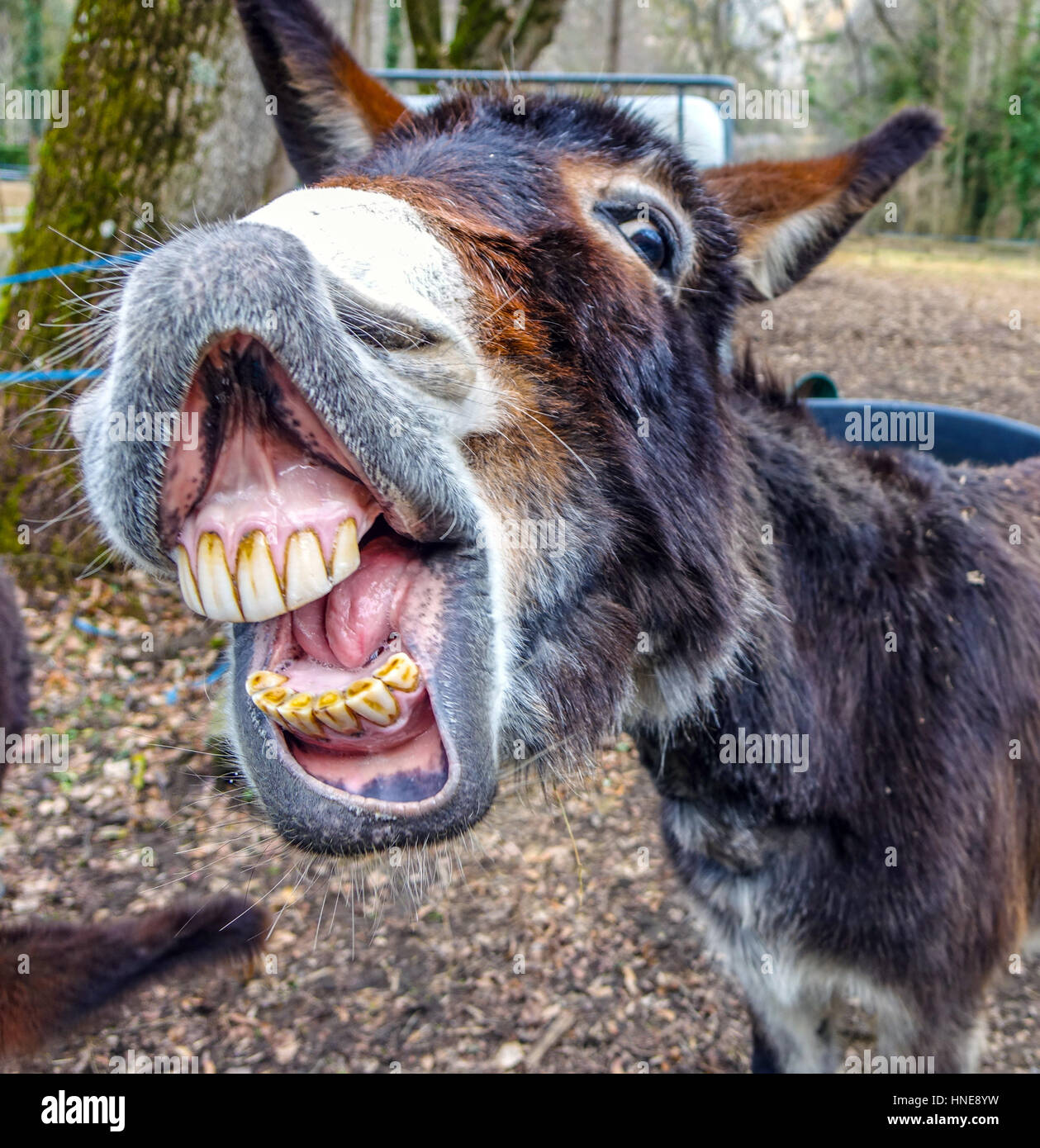
Donkey smiling showing big set of teeth Stock Photo 133694733 Alamy
Certain dental conditions become more common with age. How to spot problems with your donkey's teeth Watching for signs will help you identify dental problems at an early stage. If your donkey becomes reluctant to eat, it may be because they are associating eating with pain.

Donkey Showing Open Mouth Teeth Stock Photo 29194030 Shutterstock
Feed - sudden changes to diet, poor quality food, too much grass, feeding cereals: Make any dietary changes gradually over at least a week, ideally 2-4 weeks. Feed good quality forage and donkey specific proprietary foods. Avoid moldy food. Always soak sugar beet to the manufacturer's recommendations.
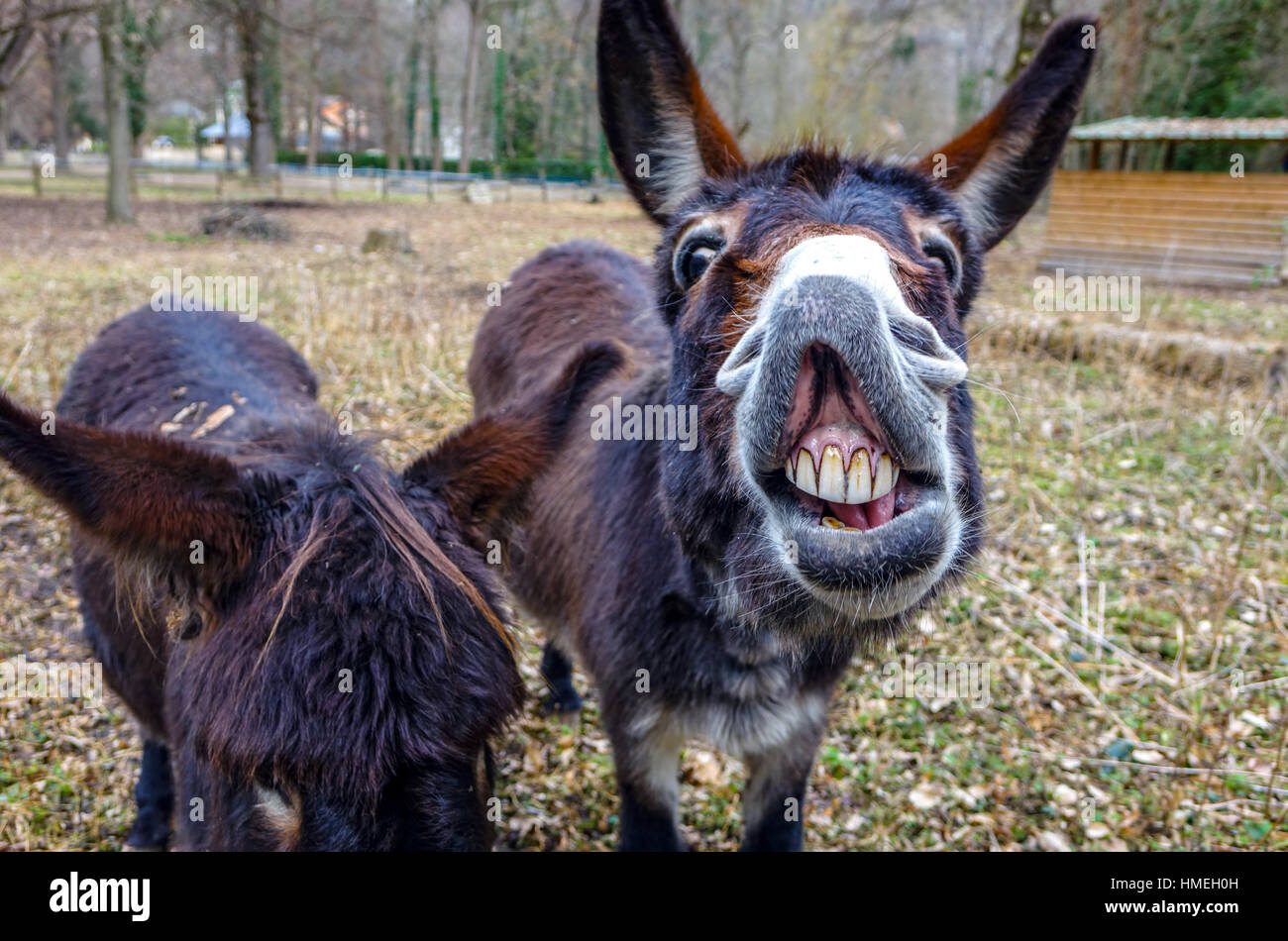
Donkey Smiling With Teeth
Dental disease is recorded as being the second most common clinical problem encountered in the donkey, after disorders of the feet. It has the potential to cause significant pain, which may go unrecognised in these stoic animals. Prophylactic dentistry is essential. Donkeys may have up to 44 teeth. Because they are continual grazers and thrive.

A donkey shows his teeth at Arbuckle Wilderness Park near Davis Oklahoma. See more photos at
Donkeys may have anywhere between 16 and 44 teeth depending on age, gender, and the presence of small non functional wolf teeth. Donkeys evolved to roam around 15km/ day in very arid climates across rugged terrain, in search of sparse and coarse grasses as well as other fibrous plant materials.

Why Do Donkeys Show Their Teeth? (8 Reasons)
January 26, 2021 by willpeach85 An aggressive donkey can be scary and off-putting. Having one on your farm or ranch has lots of drawbacks. So it's important you address the topic! Donkeys can show aggression by snorting, kicking out with their hooves and facing up to perceived threats square on.

Closeup Head Shot Of Single Donkey Showing Teeth And Tongue And Appearing To Be Laughing Stock
The first teeth in the donkey's mouth, and the most visible, are the incisors. These teeth are flat and blocky looking, like overgrown human incisors. Donkey's have 12 total incisors; six on the top and six on the bottom. They're used primarily to pull vegetation from shrubs, trees, and branches.
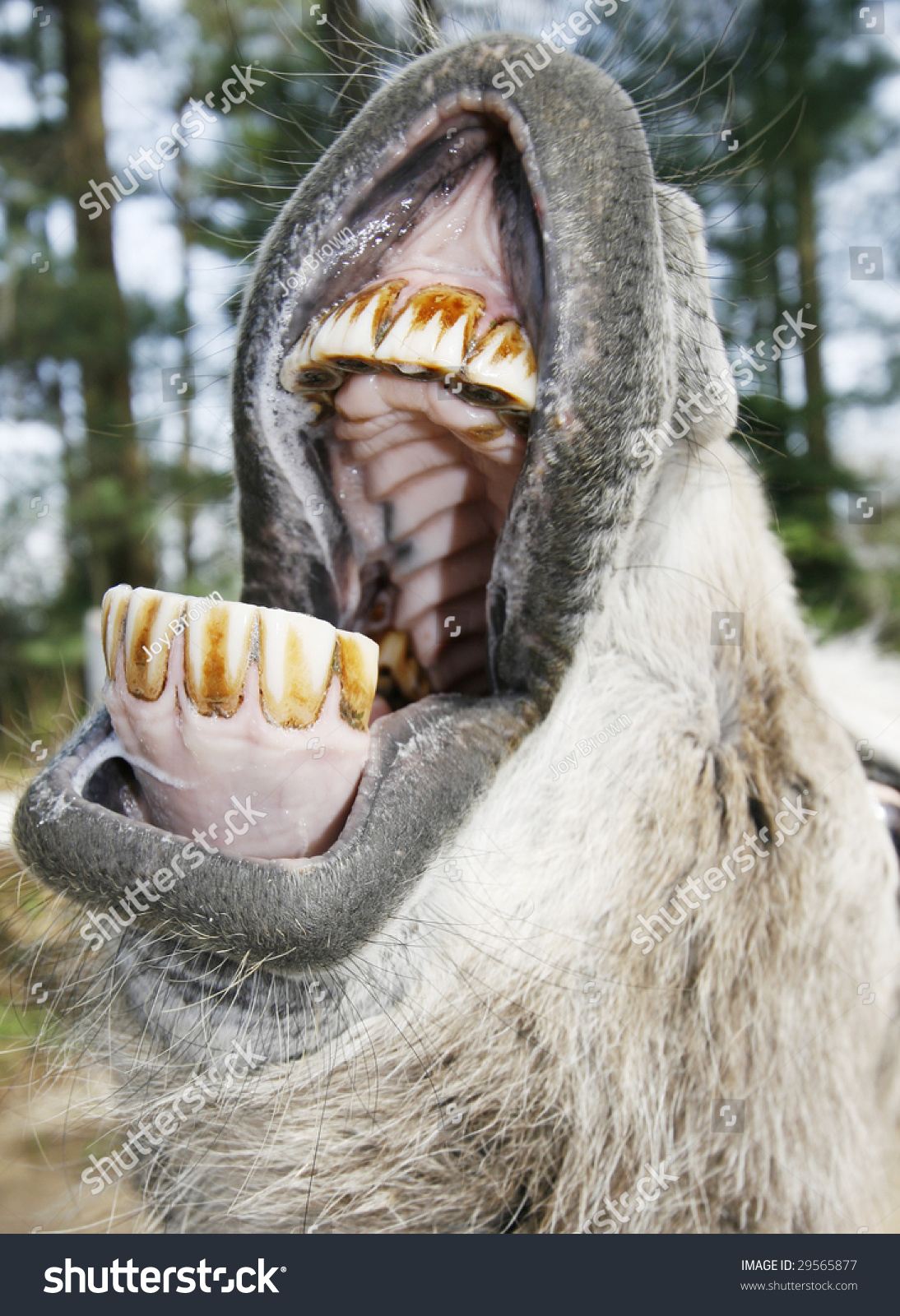
Donkey Open Mouth Showing Teeth Gums Stock Photo 29565877 Shutterstock
Problems with your donkey's teeth can cause a lot of pain, as well as an inability to chew properly, graze or eat. Donkeys have a stoic nature, this means they are good at hiding pain and illness and it can be dificult to tell if something is wrong.
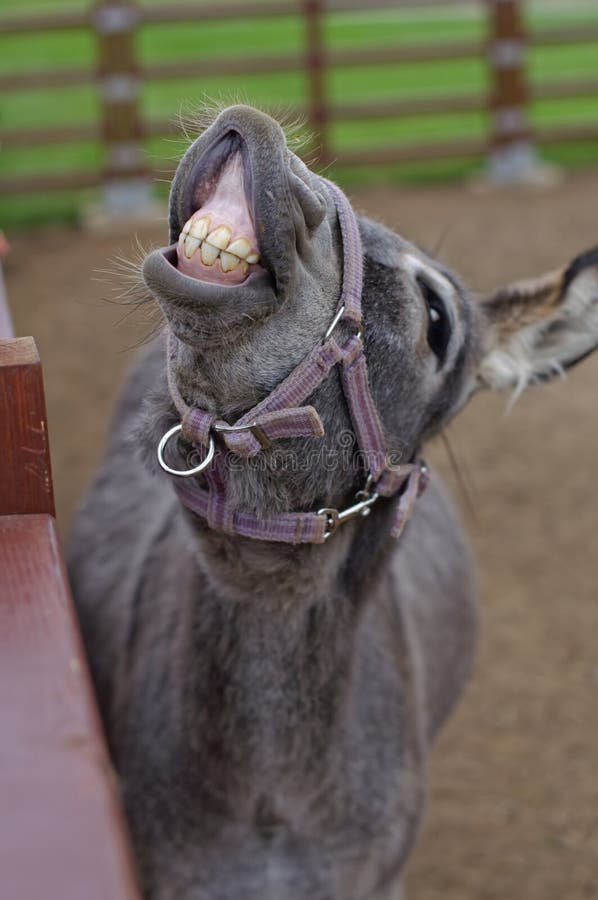
291 Donkey Teeth Stock Photos Free & RoyaltyFree Stock Photos from Dreamstime
Here, we'll learn more about the specific dental structure of donkeys, what kind of teeth they have, and why they 'smile'. Finally, we'll explore how veterinary specialists treat dental ailments.

20 Adorable Donkeys That Will Make You Smile Bouncy Mustard
Some of the causes of your donkey's aggression include: 1. Reacting to Threats. A donkey, especially a guard donkey will show aggression at the sight of predators like coyotes, snakes and wild dogs. Donkeys will bray, chase and kick out at any animal they feel is a threat to the livestock they are guarding. 2.

Black Donkey Braying and Showing Teeth, at the Wooden Fence. Stock Image Image of tongue, cute
Hypodontia. A reduced number of teeth. This can be developmental, as a result of an inappropriate differentiation of dental lamina and tooth germs (agenesia), or may occur during the animal's lifetime, due to trauma, age or secondary to other dental disorders. Developmental hypodontia in a donkey.
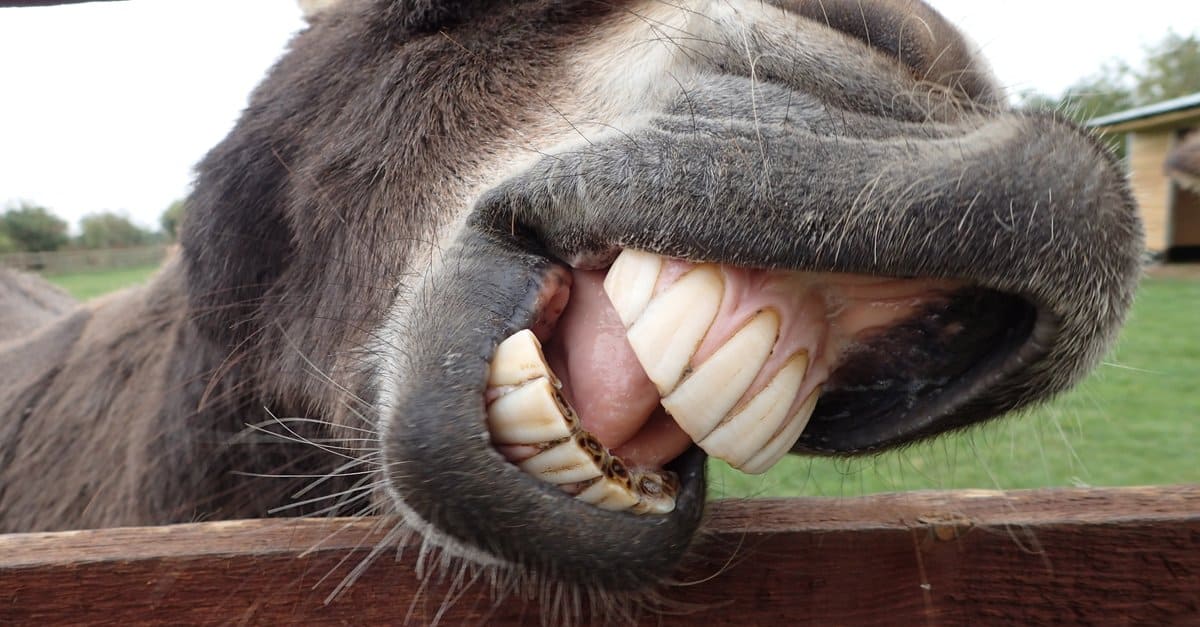
Donkey Teeth Everything You Need to Know AZ Animals
RF KYAYYK - A close-up shot of a donkey showing teeth. RM C193JC - Three donkeys in an amusing pose RF 2C4YPH6 - A Funny Silly Looking Horse is Laughing Out loud RM MH71BY - Pyrotherium teeth. extinct genus of South American ungulate or donkey fossil. Skull. RM AAHCW5 - Donkey Yawning RF 2G2ANX9 - Funny donkey teeth in stable, wild animals, mammals

Funny Donkey Showing Teeth Stock Photo 2220267039 Shutterstock
How Many Teeth Do Donkeys Have? By the time they're five years old, donkeys have all of their adult teeth, though they don't start replacing the baby teeth until they're about 2.5 years old. Adult donkeys have 40 teeth; 12 incisors, four canines, 12 premolars (up to 16 if wolf teeth are present), and 12 molars.
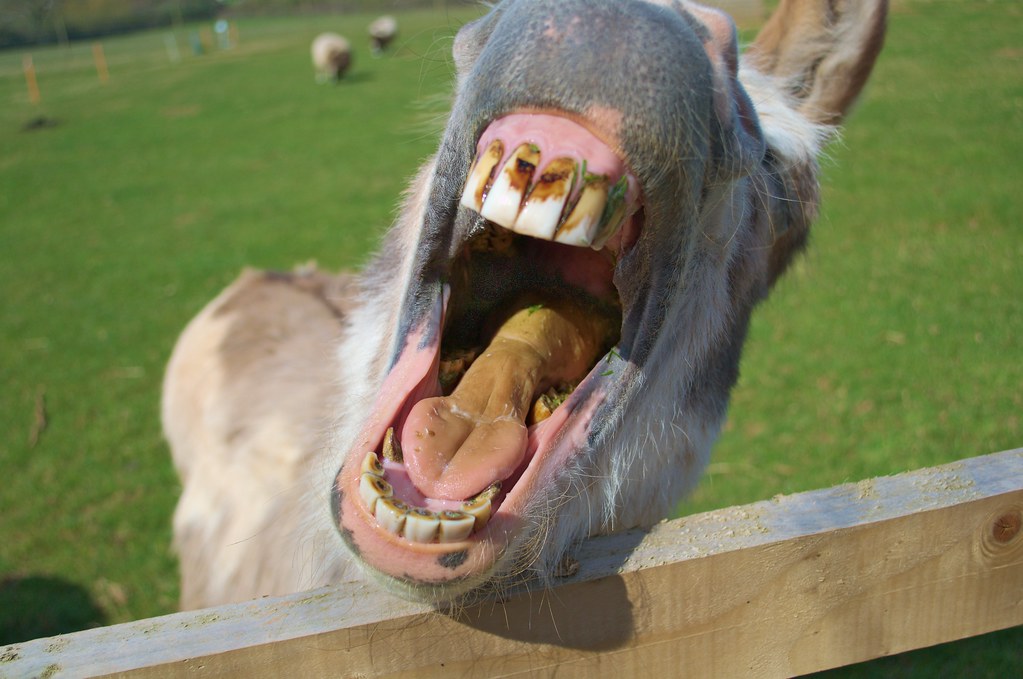
Donkey Teeth Andy Merchant Flickr
What does it mean when donkeys show their teeth? A donkey' teeth and mouth are very big compared to the size of their head. When a donkey is calm and relaxed, you might be able to see the teeth at the bottom of their jaw. However, to see the donkey's full set of teeth, they need to do that smile where they bring their top lip up.

Playful donkey showing teeth stock photo
Recent studies show that teeth fragments are more commonly found on the medial aspect of the CT rows in donkeys, so extra care is needed during the extraction of these fragments to avoid laceration of the great palatine artery. The most common deciduous teeth to be retained are central and corner incisors (01s and 03s) and deciduous 08s.